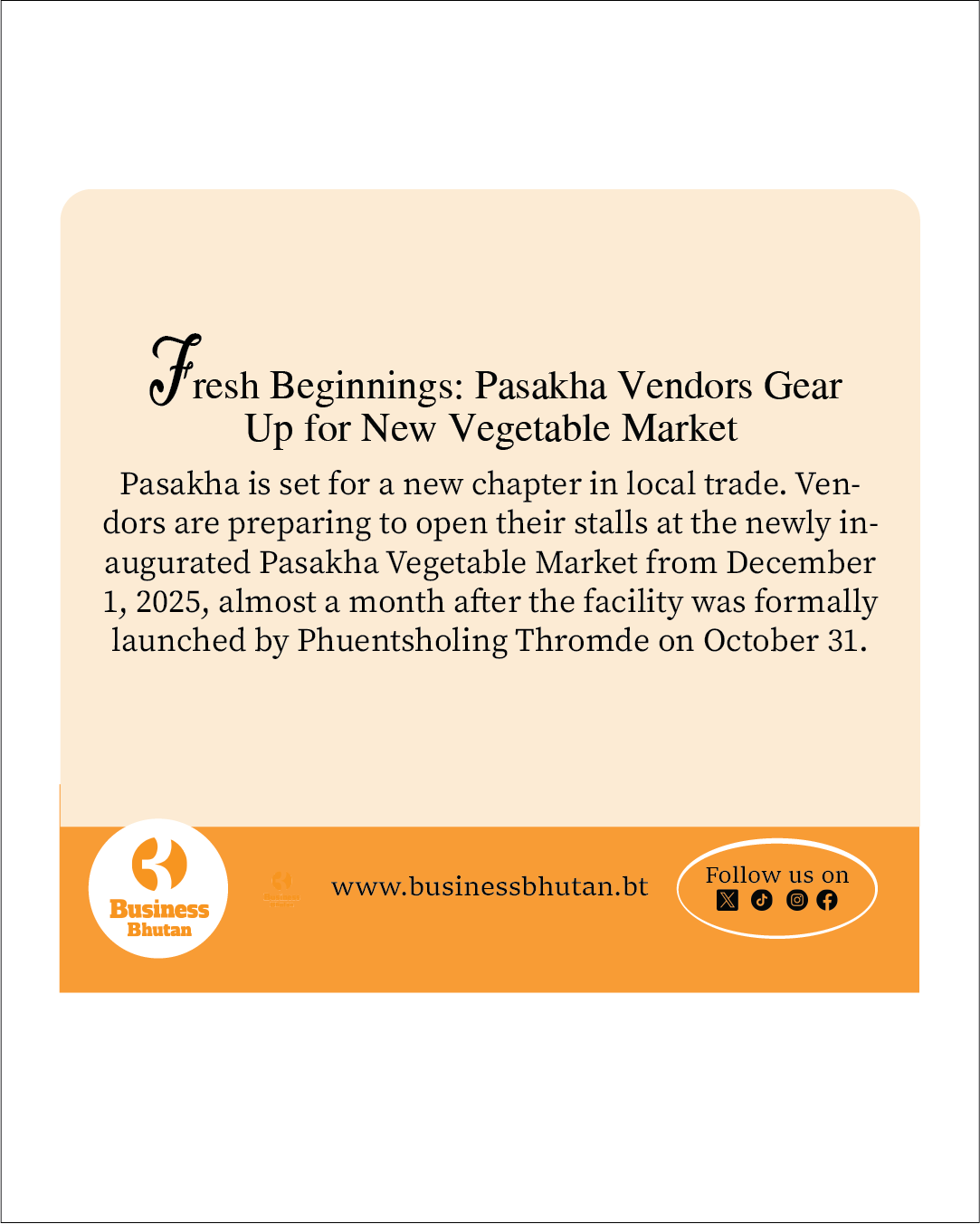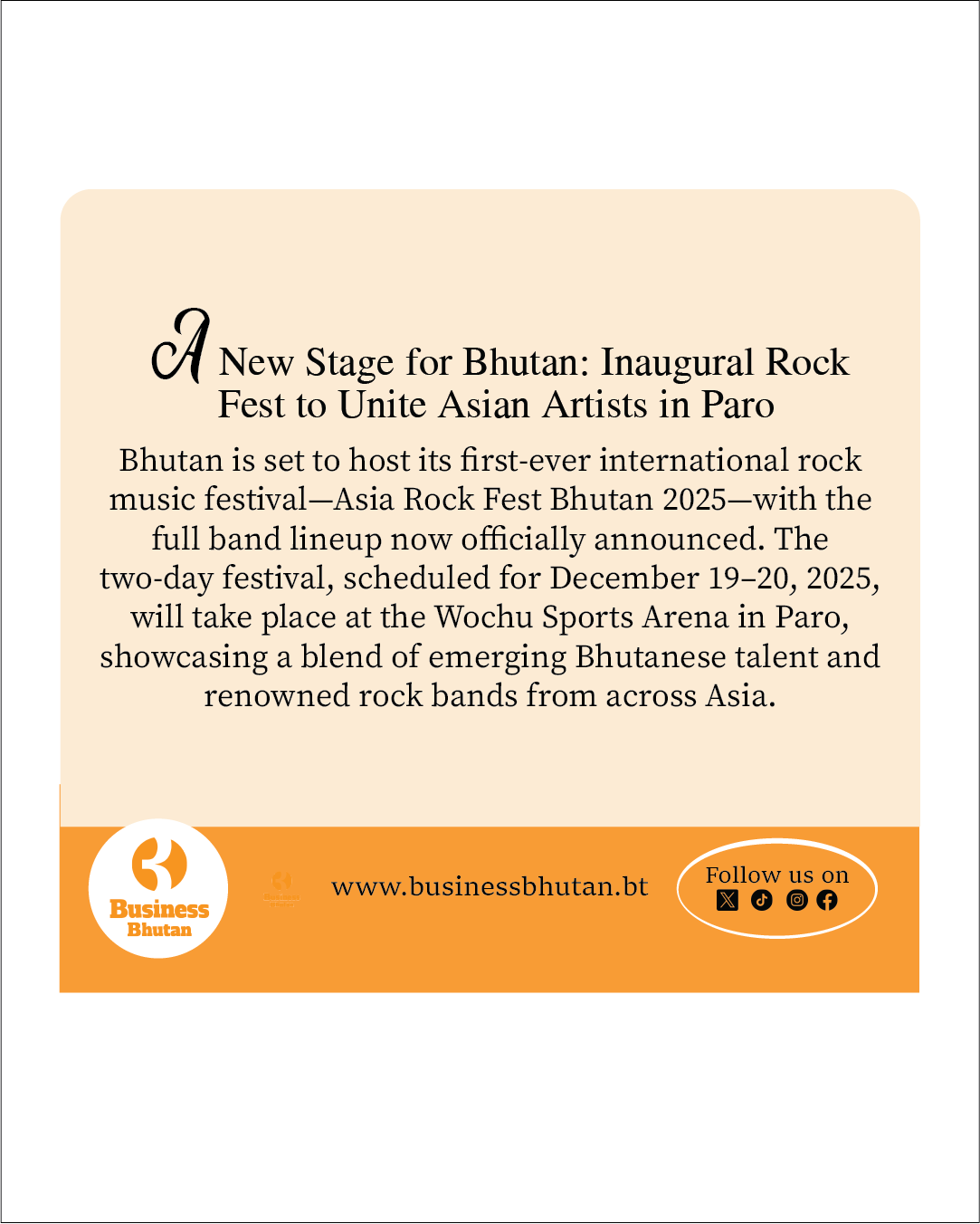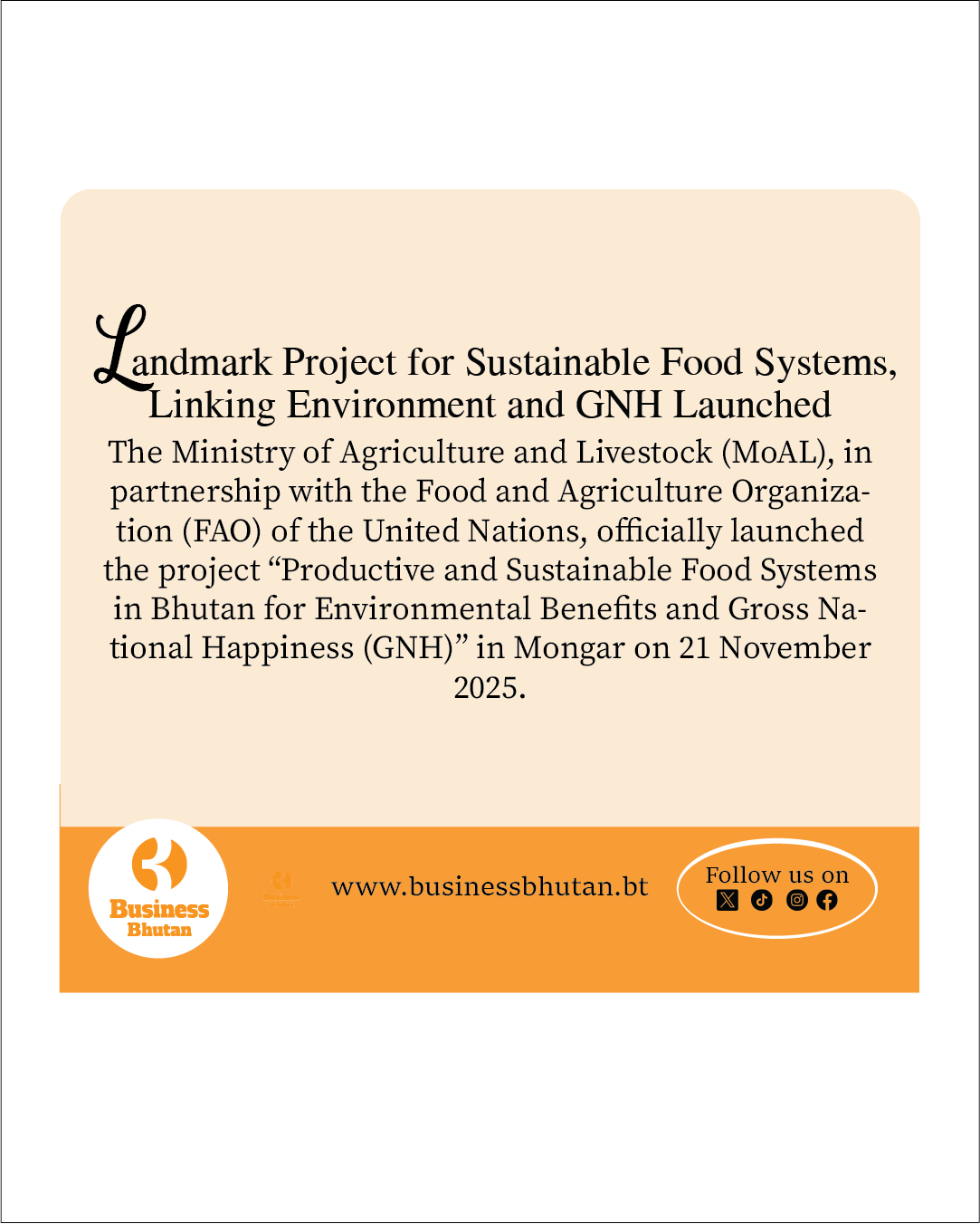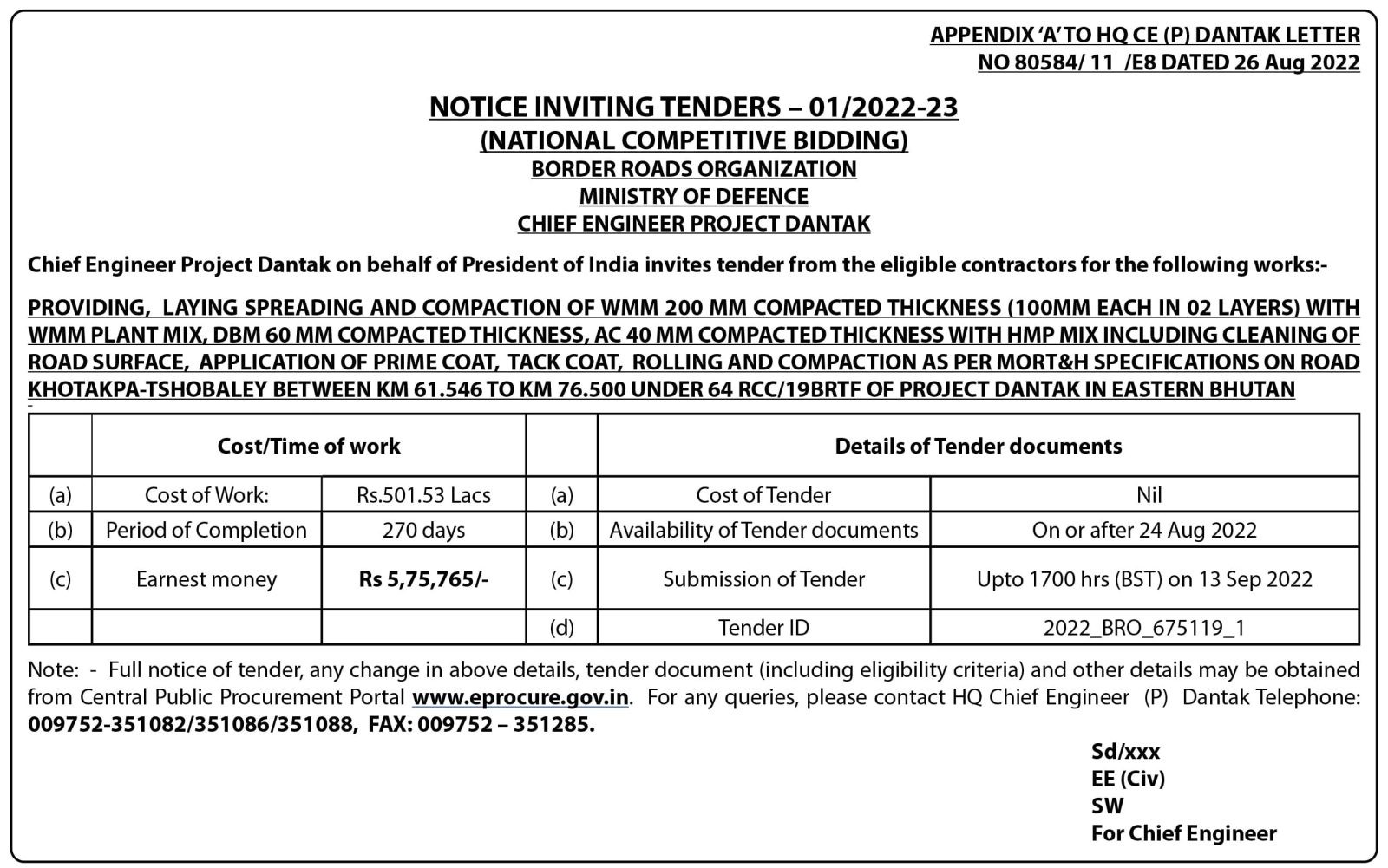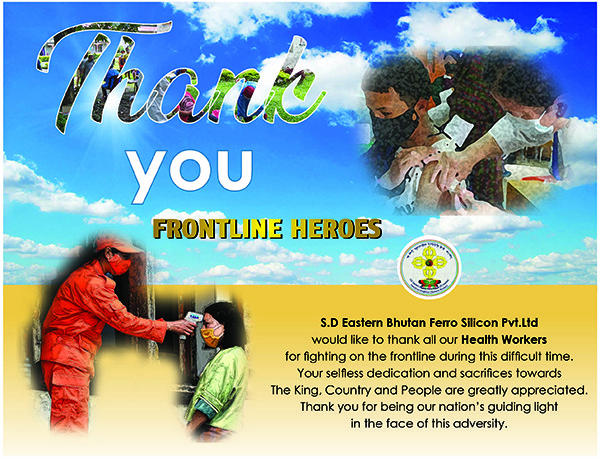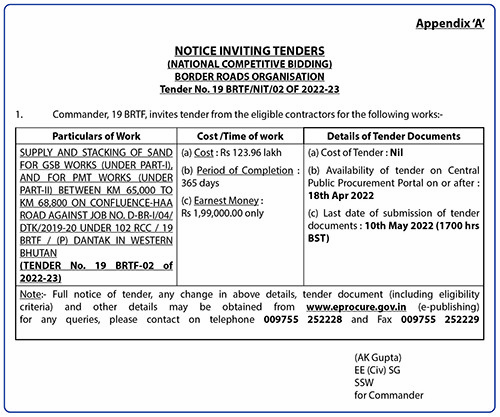The majestic backdrop of Mount Jomolhari once again came alive with vibrant colors, rhythmic songs, and warm hospitality as the 11th edition of the Jomolhari Festival was celebrated on October 14–15 at Dangochang, Soe Gewog. The two-day event attracted over 800 visitors, including both local and international tourists, reaffirming the festival’s role as a beacon of highland heritage, eco-tourism, and sustainable livelihoods.
Held annually at the base of Bhutan’s second-highest peak, the festival is much more than a celebration — it is a carefully nurtured initiative designed to bring economic opportunities to remote highland communities while preserving their unique traditions.
Residents from Soe, Nubi, Yaksa, and Lingzhi came together for the festival, setting up stalls that sold local handicrafts, traditional delicacies, and grocery items. Others ran temporary restaurants, guesthouses, and food stalls, creating a bustling, festive marketplace.
Unlike conventional tourism models, the Jomolhari Festival follows a rotational participation system, allowing different communities to host businesses each year and ensuring income is distributed equitably.
Among the many local entrepreneurs was Choten Tshering, who operated a small restaurant during the festival. With a broad smile, he shared,
“This year’s event offered a better chance to earn. In just two days, I made around Nu 70,000. Even though I had limited infrastructure — with only a few chairs and tables — the response from visitors was very encouraging. I hope next year’s festival brings even more people so we can all benefit.”
Another participant, Chencho Norbu, who ran a grocery stall and guesthouse, echoed similar sentiments. He too earned around Nu 70,000 but pointed out the need to increase visitor diversity.
“Most of my guests this time were from nearby villages. We’re hoping that in future festivals, more people will come from other dzongkhags and even abroad. That would make a huge difference to our income.”
The festival saw a noticeable increase in visitors compared to previous years. According to Kencho Tshering, Gup of Soe Gewog, this was partly due to improved promotion efforts through social media influencers and support from Thimphu Dzongkhag.
“The festival is growing steadily. This year, the increased turnout reflects not just the beauty of the event but also the growing interest in Bhutan’s highland culture. These festivals help generate income for our people, especially those living in remote gewogs where other economic opportunities are limited,” the Gup shared.
The presence of international tourists added to the festival’s vibrancy. Visitors not only explored the scenic landscapes of Jomolhari but also interacted directly with highland residents, gaining firsthand experience of their lifestyle, values, and conservation work.
The Jomolhari Festival has always been more than an economic activity — it is a platform to celebrate and safeguard cultural heritage. Throughout the two days, visitors were treated to a lively lineup of traditional songs and dances, archery and khuru games, and yak parades that highlighted the pastoral lifestyle of the highlanders.
The festival also underscores Bhutan’s commitment to environmental conservation, particularly snow leopard protection. The region around Mount Jomolhari is one of Bhutan’s key snow leopard habitats. Local communities, supported by conservation partners, play a critical role in protecting these endangered species through traditional knowledge and community-based conservation practices.
Information booths and awareness activities during the festival highlighted these ongoing efforts, linking cultural celebration with environmental stewardship.
The Jomolhari Festival is organized jointly by the Soe Gewog Administration and the Thimphu Dzongkhag Administration, with strong support from the Bhutan Foundation and other conservation and tourism partners. Their collaboration ensures that the festival remains a community-led initiative while receiving the logistical and promotional backing needed to attract a larger audience each year.
The Bhutan Foundation has long supported highland communities in eco-tourism initiatives, recognizing them as a powerful tool for cultural preservation, environmental protection, and income generation. Through such platforms, highlanders are not only able to share their way of life but also to strengthen their resilience against changing economic and climatic realities.
As Bhutan advances its vision of high-value, low-volume tourism, festivals like Jomolhari stand as model examples of how tourism can be community-based, culturally rooted, and environmentally sustainable. They enable visitors to experience the country’s authentic traditions while ensuring that local people benefit economically.
For highland communities that face unique challenges — from limited infrastructure to harsh climatic conditions — such economic opportunities can be transformative. The income earned during these short periods often supports households through the winter months, funds children’s education, and allows families to reinvest in small businesses.
Despite the success of this year’s festival, many locals emphasized the importance of improving basic infrastructure such as better seating, sanitation, and access roads. With enhanced facilities, they believe the festival can attract even more visitors in the years to come, increasing both its cultural and economic impact.
The 11th Jomolhari Festival reaffirmed its role as a celebration of heritage and a catalyst for change in Bhutan’s highlands. By blending culture, conservation, and commerce, the festival offers a glimpse into a future where development and tradition move hand in hand.
“Our culture is our wealth, and festivals like this help us share it with the world,” said Gup Kencho Tshering. “Every visitor who comes here takes home a piece of our heritage, and in return, they help sustain our communities.”
Sangay Rabten
From Thimphu



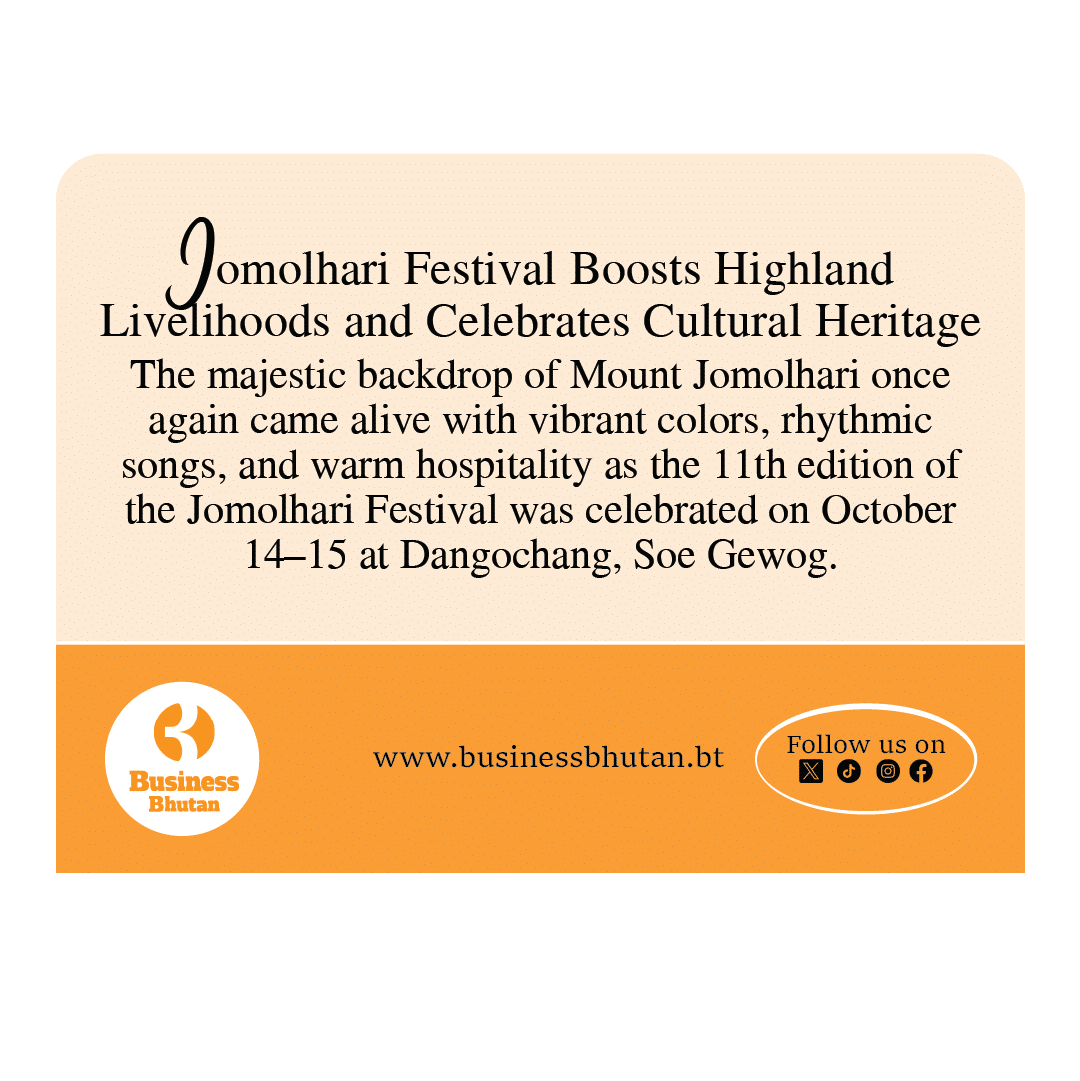
![Fresh Beginnings: Pasakha Vendors Gear Up for New Vegetable Market - Duplicate - [#16963] Fresh Beginnings: Pasakha Vendors Gear Up for New Vegetable Market - Duplicate - [#16963]](https://businessbhutan.bt/wp-content/uploads/2025/11/Asset-200.png)
